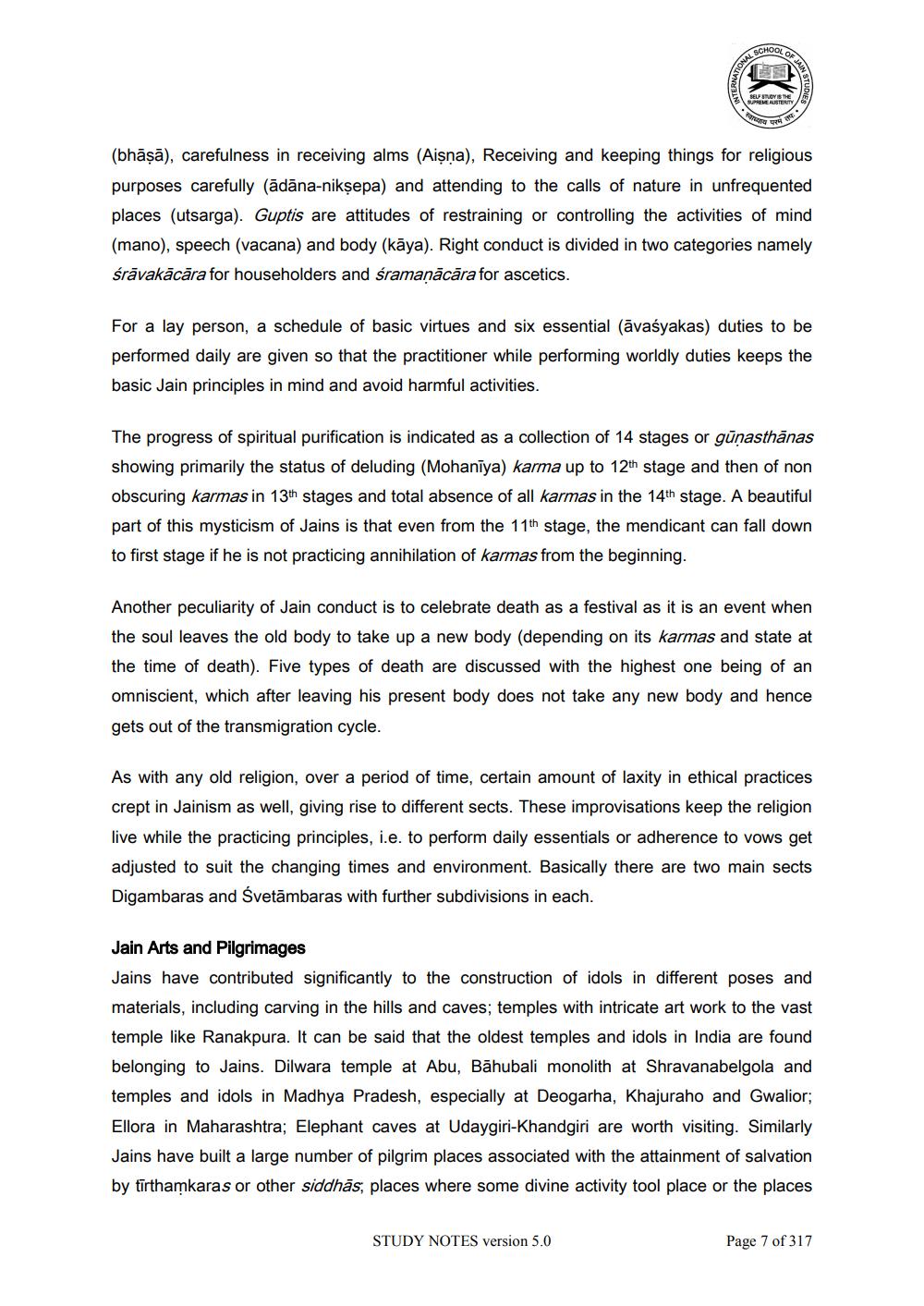________________
(bhāṣā), carefulness in receiving alms (Aisna), Receiving and keeping things for religious purposes carefully (ādāna-niksepa) and attending to the calls of nature in unfrequented places (utsarga). Guptis are attitudes of restraining or controlling the activities of mind (mano), speech (vacana) and body (kāya). Right conduct is divided in two categories namely śrāvakācāra for householders and sramanācāra for ascetics.
For a lay person, a schedule of basic virtues and six essential (āvaśyakas) duties to be performed daily are given so that the practitioner while performing worldly duties keeps the basic Jain principles in mind and avoid harmful activities.
The progress of spiritual purification is indicated as a collection of 14 stages or gūņasthānas showing primarily the status of deluding (Mohanīya) karma up to 12th stage and then of non obscuring karmas in 13th stages and total absence of all karmas in the 14th stage. A beautiful part of this mysticism of Jains is that even from the 11th stage, the mendicant can fall down to first stage if he is not practicing annihilation of karmas from the beginning.
Another peculiarity of Jain conduct is to celebrate death as a festival as it is an event when the soul leaves the old body to take up a new body (depending on its karmas and state at the time of death). Five types of death are discussed with the highest one being of an omniscient, which after leaving his present body does not take any new body and hence gets out of the transmigration cycle.
As with any old religion, over a period of time, certain amount of laxity in ethical practices crept in Jainism as well, giving rise to different sects. These improvisations keep the religion live while the practicing principles, i.e. to perform daily essentials or adherence to vows get adjusted to suit the changing times and environment. Basically there are two main sects Digambaras and Śvetāmbaras with further subdivisions in each.
Jain Arts and Pilgrimages Jains have contributed significantly to the construction of idols in different poses and materials, including carving in the hills and caves; temples with intricate art work to the vast temple like Ranakpura. It can be said that the oldest temples and idols in India are found belonging to Jains. Dilwara temple at Abu, Bāhubali monolith at Shravanabelgola and temples and idols in Madhya Pradesh, especially at Deogarha, Khajuraho and Gwalior; Ellora in Maharashtra; Elephant caves at Udaygiri-Khandgiri are worth visiting. Similarly Jains have built a large number of pilgrim places associated with the attainment of salvation by tīrthamkaras or other siddhas, places where some divine activity tool place or the places
STUDY NOTES version 5.0
Page 7 of 317




